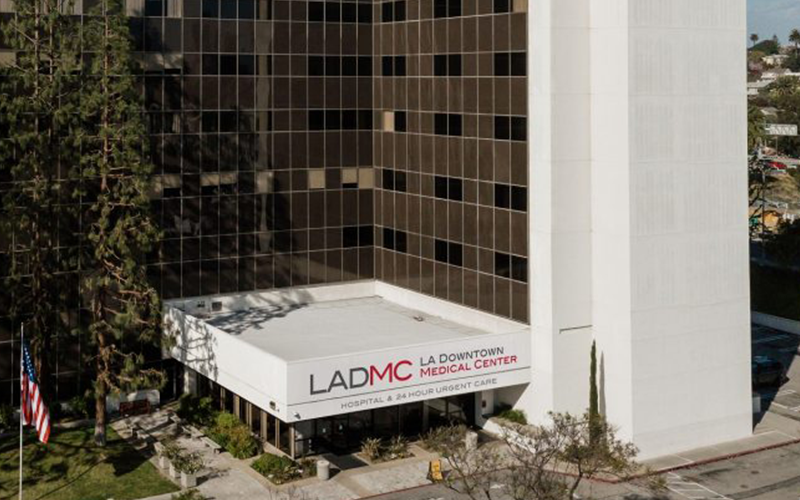HOSPITALS AND LIFE SCIENCE PROPERTIES:
Strategies to Reduce Carbon Emissions for healthcare from the Department of Energy and insights on using the IRA from the National Academy of Medicine
December 10, 2023
Low Carbon Tech and Finance Series
Office | Large Office | Healthcare | Multifamily
Hospitals and other healthcare properties account for 8.5% of all U.S. greenhouse emissions and are among the most energy intense facilities. With the Joint Commission expected to address climate impact with new accreditation standards and government led mandates,
As one of the pioneers of PACE financing, CounterpointeSRE has extensive experience in utilitizing PACE for healthcare properties as illustrated in this project below. PACE financing can be utilized by owner occupied as well as leased properties to provide a low cost source of capital to address deferred maintenance, replace equipment, renovate ED’s or add ASU through a simple property tax mechanism that provides 100% financing and avoids complicated bonding process and intercreditor agreements. Read more about commercial PACE for healthcare properties here
Counterpointe Sustainable Real Estate healthcare finance is physician-led and is a network organization of the National Academy of Medicine with a commitment to work in priority areas of the Climate Collaborative. In addition, CounterpointeSRE has partnered with the Department of Energy to provide solutions and low carbon strategies for healthcare properties.
Low Carbon Strategies from the Department of Energy
Lighting
LED lighting that meets DesignLights Consortium (DLC) technical requirements with integrated daylight and occupancy sensor networked lighting controls that meet DLC requirements, load shed via Auto-DR interface
with BAS. Download Better Buildings strategy sheet below.
HVAC and Water Heating
A wide range of recommendations from the Better Buildings Solutions Center range from the optimization of cooling tower performance to the installation of a building or district water loop heat exchange and heat pump system. Additional recommendations include a switch to radiant or chilled beam systems with a dedicated outdoor air system (DOAS) unit for ventilation.
Building Controls
Implement controls that integrate building loads, thermal/battery storage, on-site co-generation plants, PV, and EV charging. Utilize Energy Management and Information System (EMIS) as an integrated platform for monitoring and control to provide demand flexibility.
Building Envelope
Starting with simple EE measures such as cool roof coatings and ranging to the installation of dynamic glass windows, Better Buildings carbon reduction strategies for hospitals include insulation, airtightness and window solutions such as the installation of dynamic windows, thin triple windows and/or vacuum glazing. Download the full list below.
Renewables and Battery
Purchase on-site PV to cover roof area (verify roof structure and age) and parking as needed while integrating renewables, battery storage and building loads into demand flexibility controls.
Download the full Low Carbon Technology Strategies guide for hospitals from the Department of Energy’s Better Buildings initiative here.

Read more from the National Academy of Medicine’s Guide to how healthcare organizations can utilize the IRA (Inflation Reduction Act) to reduce costs while increasing resiliency and sustainability.

C-PACE for energy efficient Hospital Expansion

The retrofit of an acute care hospital in downtown Los Angeles was supported by $10.2 million in C-PACE funding for energy efficiency improvements.
- 116-bed acute care hospital in Los Angeles funded the renovation of underutilized space to create a Behavioral Health Center
- Cost-benefit analysis of proposed measures with benefits of C-PACE led owners to extend the scope of work beyond renovation project to address deferred maintenance
- Additional projects financed included modernization of elevators, multiple HVAC projects, and a new standby emergency generator
- Completed projects included to recapitalize expended funds
Additional Resources:
- Press Release: “LA Downtown Medical Center Taps C-PACE for $10.9 million“
- CounterpointeSRE and Department of Energy –Better Buildings
- California hospital system taps C-PACE to fund HVAC upgrades in 5 hospitals and seismic retrofit to comply with Hospital Safety Act that establishes seismic safety building standards for California hospitals built after March 7, 1973.
- Overview of Commercial PACE Benefits for healthcare properties in new construction and retrofits
- In depth review of PACE for healthcare properties with case studies

How to Get Started
- Work with professional to identify potential measures that increase efficiency and generate energy. CounterpointeSRE has partnered with full-service companies specializing in comprehensive solutions for life science and healthcare facilities to support resiliency, energy savings, & sustainability.
- Submit itemized cost of proposed measures and projected first year utility savings to CounterpointeSRE for cost benefit analysis report and eligiblity review. Most if not all projects are 100% financed with no CAPEX and positive cash flow the first year for 1 year payback.
- Contact CounterpointeSRE to coordinate consent from lenders of debt financing early in planning and during any refinancing process to prepare for future projects.
- In sale-leaseback and other lease structures, CounterpointeSRE works with landlord and tenant to optimize cash flows with benefits for tenant and owner.
Submit Inquiry to request more information or contact CounterpointeSRE’s healthcare finance team to learn more.
